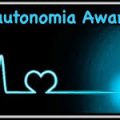POTS cannot be reduced to a simple description like, “I stand up and then I faint.” There are numerous signs and symptoms associated with the syndrome.
When some combination of the following has been in place for six months or more and the correct tests have been performed, a definitive diagnosis is more likely.
- A feeling of being lightheaded upon standingwith possible heart palpitations and a “tremulous” or shaky feeling.
- Some type of visual disturbance like “seeing stars” or blurring.
- An uncomfortable feeling in the head (throbbing) and possibly in the neck.
- An inability to concentrate or think clearly. Often described as “brain fog”
- Feeling tired and experiencing weakness.
- Fainting spells, generally within 10 minutes of standing.
- Nausea or “queasiness.”
- Discomfort in the chest including being short of breath.
POTS patients often experience difficulty with associated anxiety as they become increasingly apprehensive about standing. This leads to additional symptoms including:
- Gastrointestinal upsets like constipation and bloating and/or episodes of diarrhea.
- Changes in sweating, usually increased with a sense of feeling “clammy.”
- Insomnia that exacerbates the overall problem of fatigue.
In cases with POTS-like symptoms, any or all of the following diagnostic tests may be used to arrive at an explanation for what is happening to the body, particularly within the autonomic nervous system.






 I love to write medical education books. My books are written for everyone in an easy to read and understandable style.
I love to write medical education books. My books are written for everyone in an easy to read and understandable style.